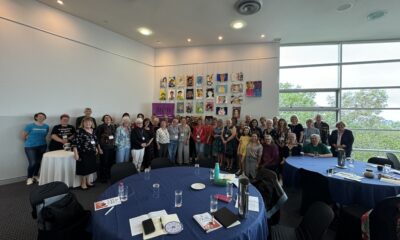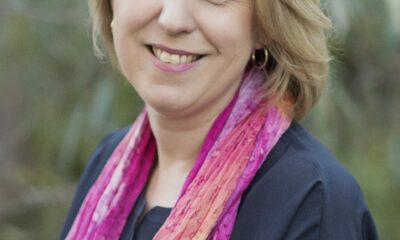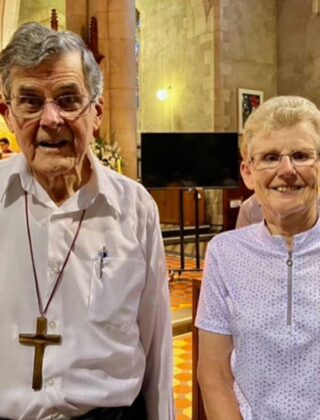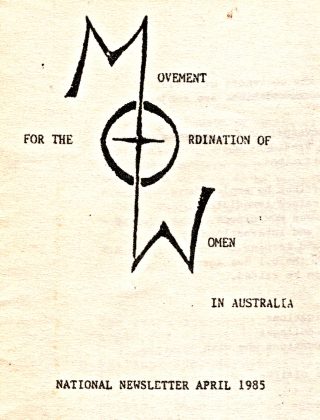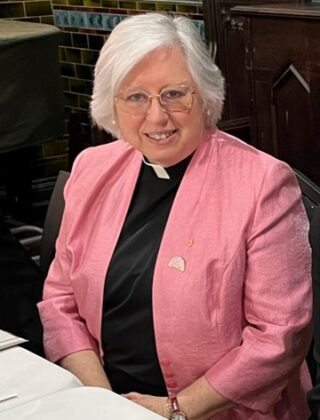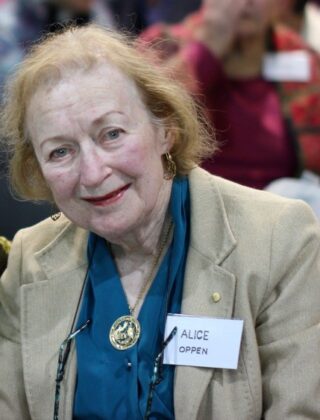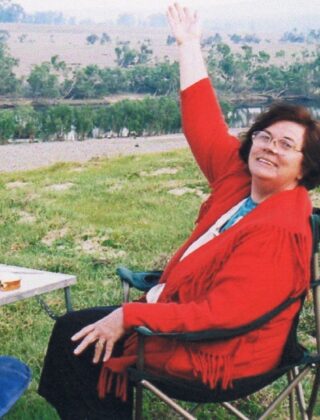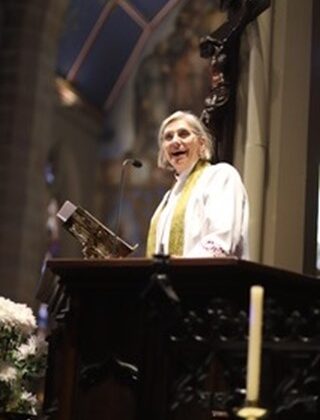MOW and its Role

With their Hearts in their Mouths
The Movement for the Ordination of Women and its Role
Janet Scarfe
(National President, MOW 1989-95)
MOWatch Conference, Canberra 2012
At the MOWatch conference in 2010, someone commented to me almost in passing: ‘Amazing, it will soon be 20 years since the first ordinations’. Twenty years. It is longer than the interminable fifteen years between General Synod in 1977 agreeing that theological objections were not an obstacle to women’s ordination and the first ordinations of women as priests in 1992. It is shorter than the 24 years since the Diocese of Sydney first ordained women as deacons in 1989. It is far shorter than the six decades Elizabeth Alfred waited before her calling to priesthood was recognised. In the eyes of Keith Rayner and other church leaders of the time, twenty years was a tiny fraction of 20 centuries of Christian history.
The anniversary has been and continues to be celebrated in many dioceses with eucharists, dinners, seminars, at least one plaque, this conference of course, and the publication of Preachers, Prophets & Heretics: Anglican Women’s Ministry. That chance remark about 20 years at the MOWatch conference was in fact the catalyst for the book. Patricia Brennan’s illness made it seem imperative. Patricia did not live to see it come to fruition, but the collection is dedicated to her because her name was synonymous with the Movement for the Ordination of Women and inseparable from the debate. Her presence permeates the text and the photos.
The title of chapter on the Movement for the Ordination of Women, MOW – ‘With their Hearts in their Mouths’ – are words she wrote in the MOW National Magazine in 1989.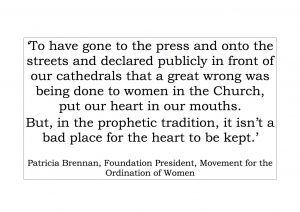 In 1992, the Australian newspaper described MOW as ‘one of Australia’s most forceful reform movements.’[1] It was an unlikely contender for the title, even though the national Anglican Church was at that point on the verge of permitting women to be priests. MOW was always a small organization. Most members were faithful Anglicans, men and women in their forties and fifties. They did not seem like your typical activists.
In 1992, the Australian newspaper described MOW as ‘one of Australia’s most forceful reform movements.’[1] It was an unlikely contender for the title, even though the national Anglican Church was at that point on the verge of permitting women to be priests. MOW was always a small organization. Most members were faithful Anglicans, men and women in their forties and fifties. They did not seem like your typical activists.
But they were determined to confront their church over its discriminatory treatment of women, and particularly over its exclusion of women from the ordained ministry. They held up protest banners and distributed literature at important church occasions.
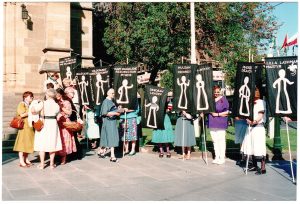
They lobbied church leaders, using letters in the paper, radio and television to great effect. They brought women priests from elsewhere in the Anglican communion to prove they existed.
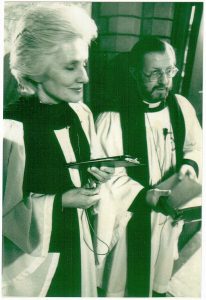
They wrote theology, prayers and hymns, which quickly found their way into parishes. They campaigned hard to increase the then small numbers of women in synods, committees and commissions.
And, then finally, in 1992, the Anglican Church of Australia did endorse the ordination of women to the priesthood.
So what was the Movement for the Ordination of Women and what was its impact and its role in the debate?
The emergence of MOW
The 1970s was a decade of lively and energetic debate on the role of women in society. Activist groups like the Women’s Electoral lobby sprang up, insisting on equal status, equal pay and inclusion for women. Groups emerged from the churches campaigning on similar issues. The Australian Council of Churches established an ecumenical Commission on the Status of Women, which made a considerable impact through its reports and national conferences. The Commission’s posters and t-shirts declared ‘Jesus was a feminist’, and its members agreed that even if Jesus wasn’t, they certainly were.
Colleen O’Reilly – known to many of us at least by name – was actively involved in the Commission. But she yearned for something distinctively Anglican in composition and focus, so she with Zandra Wilson set up Anglican Women Concerned in Sydney in 1975.
By that time, the ordination of women was on the agenda of the Anglican communion and the Church in Australia. When General Synod met in 1977, there were women who were priests in Hong Kong, the United States, Canada and ‘across the ditch’ in New Zealand.
General Synod did debate women’s ordination in 1977, and Anglican Women Concerned organised a demonstration. This was probably the first public action by women in Australia against the Anglican Church’s practice of an exclusively male ordained ministry.
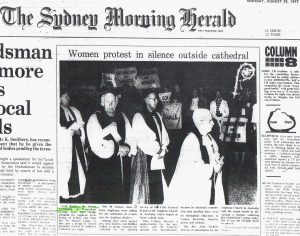
Forty women held up placards calling for women’s ordination as the bishops processed into St Andrew’s Cathedral. Many of the protesters were from Christian Women Concerned because, as Colleen discovered, Anglican women were appalled at the idea of protesting. As you can see, the Sydney Morning Herald put the protest in its front page. (You can also see the former Archbishop of Canterbury Michael Ramsey looking startled – and Heather Thomson). Church Scene (the national church paper) astutely recognised the importance of the issue. Looking to boost its circulation, it placed this startling advertisement in the Sydney Morning Herald.
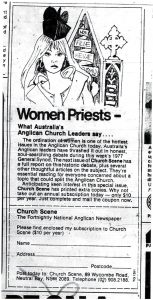
The 1977 Synod agreed that theological objections were not a sufficient barrier to women’s ordination. At its next meeting in 1981, General Synod debated the constitutional implications. Anglican Women Concerned organised another protest at the next General Synod in 1981.
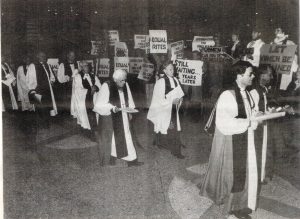
Few reporters were interested in the ins and outs of the Anglican Church’s constitution. According to the Sydney Morning Herald, ‘… most of the reporters were … interviewing women supporters of women’s ordination at an impromptu press conference on the grass outside.’[2]
And here are three of the key supporters who received considerable attention in the press: Patricia Brennan (medical doctor and missionary), Elizabeth Alfred (a deaconess for over 30 years, who the paper reported had wanted to be a priest for 50 years), and Colleen O’Reilly (AWC founder and theological student).
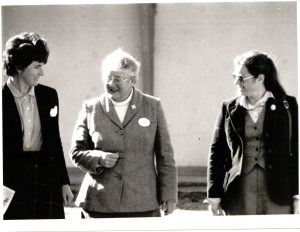
Anglican Women Concerned certainly sparked media interest but it was always very small. Another group emerged in Sydney that started attracting members, locally and nationally. The Movement for the Ordination of Women (MOW) was formed in 1983 in Sydney, with Patricia Brennan as its public face. Patricia had been involved in Anglican Women Concerned – she was a key figure in the protests and the press – but she wanted something more focused – ‘Anglican Women Concerned about what?’ she challenged. The name of the new group – the Movement for the Ordination of Women – left no one in any doubt about its objective.
Within two or three years, MOW had attracted over 800 members around Australia, and created a considerable profile through its protests, conferences and publications. Unlike Anglican Women Concerned, it built up a national structure, with branches in a number of dioceses.
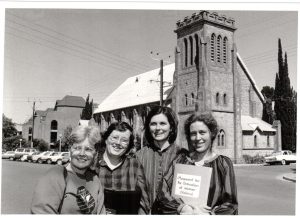
It brought together women who wanted to be ordained, women who supported women’s ordination but had no vocation themselves, and men – both clergy and lay – who believed women were called to the ordained ministry. Its critics, including church leaders, were always quick to dismiss MOW as secular feminists (a view that some hold to this day), but in fact the founders and most members had and maintained deep and long-standing connections with the church, with theological study and faith. Many founders and leaders were clergy wives.
Keeping the issue to the fore: MOW’s campaigns
Despite the Anglican pedigrees and involvement, MOW’s approach was not conventional. Its activities and statements were challenging, and showed a keen sense of ritual and theatre. Its first protest involved attaching (with blue tak) twelve theses for the ordination of women to the door of St Andrew’s Cathedral, Sydney before the 1983 General Synod in the manner of Martin Luther’s 95 theses. (This document is now in the Museum of Australian Democracy, Canberra.)
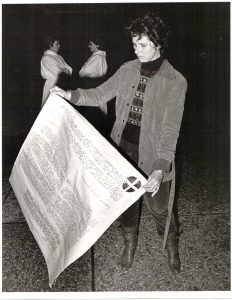
It inherited and perfected Anglican Women Concerned’s talent for upsetting the polite choreographed processions of bishops and priests, for upstaging ecclesiastical dignitaries. It could turn media attention on the visit of the Archbishop of Canterbury into an indictment on the church’s failure to ordain women, as it did when Archbishop Runcie visited Perth. It could even do this from the other side of the world. A group of MOW from Australia went to England in 1988 to join the international protest by the Women’s Witnessing Community at the Lambeth Conference of Bishops. They attracted attention in the English press and made headlines in the Australian papers and television news.
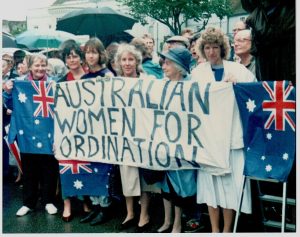
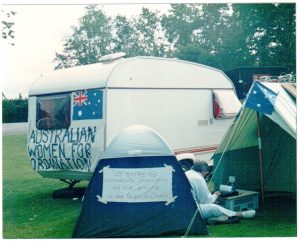
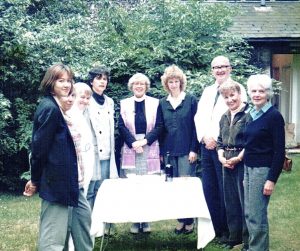
By the time 1989 General Synod came around, the small tableaux protests outside General Synod in 1977 and 1981 had grown into a full-scale city march and public rally. This scenario was repeated on a much larger scale for the Canberra-Goulburn non-ordination on 2 February 1992.
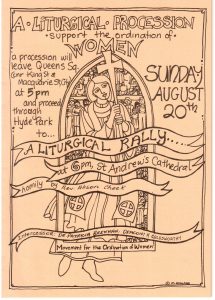
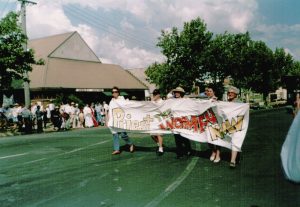
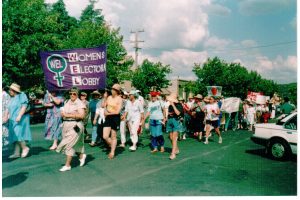
From the beginning, MOW actively looked for links with like-minded individuals and groups around the Anglican communion. In 1984, it brought Monica Furlong to Australia. Monica was a well-known religious writer, and moderator of the older Movement for the Ordination of Women in the UK. Her retreats and meetings around the country brought together supporters of women’s ordination in significant numbers for the first time. In 1985, MOW brought out the Rev Alison Cheek to speak at the first MOW national conference, ‘Telling Tales’.
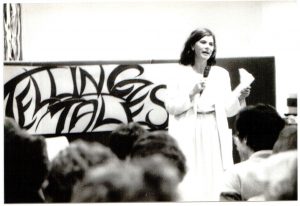
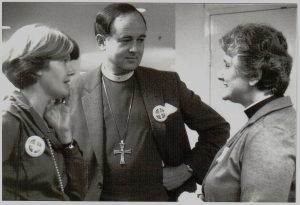
Alison was one of the ‘Philadelphia 11’, the first group women ordained priest in the US in 1974 amid a storm of controversy. She was also Australian by birth. The conference was provocative, theological, and ecumenical with Catholic nuns and Uniting Church women not simply participating but also contributing.
Perhaps the most powerful and symbolic moment at Telling Tales was the blessing and sending forth of Caroline Pearce. Caroline was moving her family from Adelaide to New York at great financial and personal cost, for theological study and she hoped ordination. The fact she could not be ordained in Australia received considerable coverage in the press.
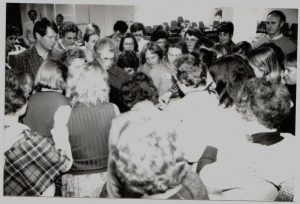
MOW sponsored or encouraged women priests from overseas to visit Australia, as part of its attempt to point out that the ordination of women was a fait accompli in some parts of the Anglican communion. Alison Cheek came regularly, certainly for General Synods as well as Sue Hiatt (another of the Philadelphia 11) and Heather Mueller (the latter two were employed by the very forward thinking Mission of St James and St John, where Diane Heath worked and which was run by the Reverend Alan Nichols).
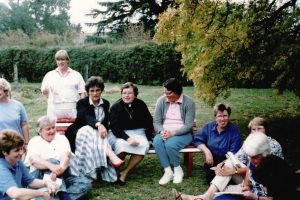
Margaret Marsh, Susan Adams and others came from New Zealand more than once. Some bishops allowed them to function as priests in Australia and some did not – which was further grist for MOW’s mill. Susan Adams was the first woman to preside officially at a public eucharist in a parish in Melbourne in mid 1986.
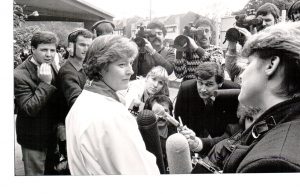
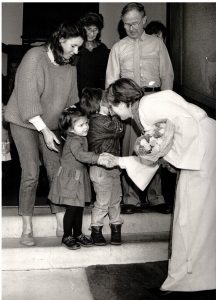
The packed church, press throng and presentation of flowers gave the event the aura of a royal visit. MOW also brought internationally known women theologians, lay women, to speak at its conferences and meetings, Elizabeth Schussler Fiorenza and Janet Soskice as well as Monica Furlong. For some people, an encounter with a woman who was a priest or a theologian was a profound, life-changing experience – to the extent that, for some women, it crystallised their own sense of calling to ordination.
I’ll skip over the chronology of ‘official’ events – the narrow defeats in General Synod of legislation for women priests in 1985, 1987 and again in 1989, contrasted with the resounding acceptance of women deacons in 1985. In February 1986, Archbishop Penman of Melbourne ordained the first women deacons despite legal threats and a bomb scare in the cathedral. (MOW Melbourne was given a precious 25 tickets to the cathedral; perhaps the pinnacle of its respectability!)
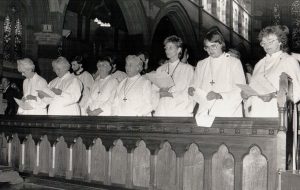
From then on, women deacons were a reality in the Australian church. By the time of General Synod in 1987, there were 40, in seven dioceses. Even Archbishop Robinson of Sydney relented and ordained women as deacons in 1989. Just to give that event a sense of perspective, it took place on the very same weekend as Barbara Harris was being consecrated in the United States as the first woman bishop in the Anglican communion. Of course, it took until 1992 until the impasse was broken when Archbishop Peter Carnley ordained ten women as priests on 7 March 1992 – a day known in some calendars as the ‘Feast of St Perpetua and her companions’ and in others as International Women’s Day.
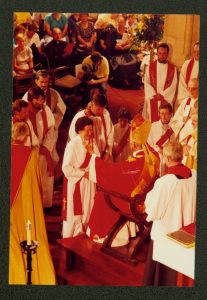
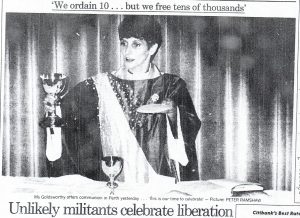
By the end of the year, the Anglican Church of Australia had 92 women who were priests.
MOW’s wide impact
What was MOW doing in that time, the years when the issue was bogged down in the legal and constitutional arguments? MOW did engage somewhat in these processes, and was grateful for the assistance of such eminent lawyers as Keith Mason and Robert Orr.
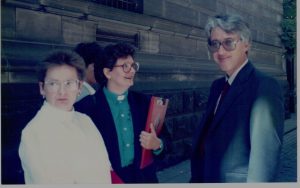
MOW itself was however never more than a peripheral player in the legal debates and constitutional controversies.
While awaiting the Appellate Tribunal opinions and synod votes over which it had no control, MOW kept as active as ever, both nationally and in its branches. Its magazines were full of theological reflections and liturgies, conference reports and papers, articles and book reviews written by MOW members. Once women were ordained deacons, MOW National assiduously kept track of their number and appointments. It provided figures to the media and the Anglican Church (which invariably seemed to under-estimate the numbers) as well as to innumerable Year 12 students doing assignments on women’s ordination.
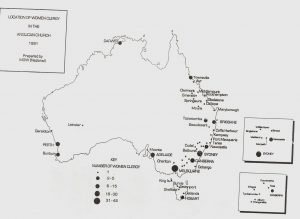
It was obvious that women deacons were running parishes, preaching sermons, conducting baptisms and funerals, and proving pastoral care in cities, country towns and remote locations. They were doing virtually everything that a priest did except preside at the eucharist. Instead they had to call in a male priest with his so called ‘magic hands’.
All that effort seems to have made an impact. Whereas bishops had once spoken almost dismissively about ‘a few women who want to be priests’, the Primate (Keith Rayner) and other bishops adopted MOW’s language, that is ‘a considerable number of women around the country believe God is calling them to the priesthood.’ That change in language and thinking seemed as great an achievement as any other.
Some supporters of women’s ordination were dismissive of MOW, regarding its role as being variously on a scale from irrelevant, through peripheral to injurious. They saw MOW as counter-productive, believing that its media comments and protests set the cause back and endangered precious votes. Perhaps most galling to these supporters were MOW’s disinclination to be grateful for token support and snail-speed progress, and its habit of publicly challenging the sincerity of the Anglican Church’s commitment to the ordination of women.
However, MOW’s contribution both to the debate and to the Church was positive and far-reaching. It is true that MOW did persistently challenge the sincerity, the authenticity, of the Church’s commitment to the inclusion and equality of women, not only in the ordained ministry but in all aspects of the Church’s life and worship. It did this in the church press and in the ‘secular’ media. It challenged the tradition of the Church expressed in its all-male ordained ministries, and the authority of the Church when it defended that tradition. That was its prophetic role. Such a stance demanded great courage from a generation of women who had been brought up in the 1950s and 1960s to be patient, grateful and silent, and to defer uncritically to received truth (tradition) and male authority.
In terms of the debate itself, MOW in general and Patricia Brennan in particular kept the issue alive in the public arena when the Church would have preferred it to be seen as an internal, domestic matter. As Alison Cheek had told the first MOW conference in 1985, public opinion had forced the Episcopal Church to resolve the matter, and its importance and sympathy could not be over-estimated. MOW had a great capacity to capture the public imagination. The national broadcaster, the ABC, had planned to televise the first ordination of women to the priesthood in Goulburn on 2 February 1992, recognising the significance of the event and the level of public interest in it.
MOW’s impact was far wider than the actual debate. It provided a space in which a woman’s call to ordained ministry was not seen as an absurdity, but as a reality to be respected and worked for. A number of women in the first generation to be ordained deacon or priest expressed or felt their calling for the first time in the midst of a gathering of MOW. Joining MOW transformed the lives of individual women who went on to be ordained or to play significant and respected roles in Anglican Church life at diocesan and national levels, as bishops, deans, archdeacons, vicars of major parishes, and as members of diocesan and national bodies, including the General Synod Doctrine and Liturgy Commissions. There is no doubt that Church forums have been enlightened and enriched by the participation of lay and ordained MOW members – thoughtful, committed Anglicans.
MOW was not merely a lobby group. For women and men who were discomforted by or alienated from the Church by the over-powering maleness of the faith and the institution, MOW became an alternative worshipping community. Its branches, conferences and publications provided a haven, a sanctuary, for its members, women and men, where different images of God, theological ideas, prayers and hymns could be explored, sifted and welcomed. Elizabeth Smith’s hymns and Janet Nelson’s intercessions were first sung and prayed at MOW meetings. From there, those hymns and prayers have spread to the worldwide Anglican Communion.
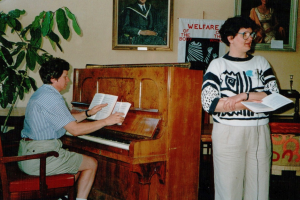
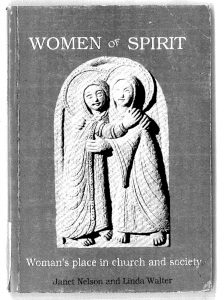
The years after 1992 were not easy for MOW. With the ordination of women to the priesthood in many dioceses, members and supporters who felt ‘the job was done’, or who were burnt out and alienated by the processes required to achieve that result, fell away. Maintaining energy and focus to address the situation in dioceses such as Ballarat and Sydney where opposition remained strong proved very difficult in the immediate aftermath. That story is for another time and place. My purpose here has been to examine the role and contribution that MOW made during the controversy that finally resulted in the official recognition by the church that God did indeed call women as well as men to the priesthood in the Anglican Church in Australia.
The last words of this section belong to the first women who were ordained or licensed as priest – 92 in ‘92. Not all of them were members of MOW but they did recognise the role MOW played as their messages showed:
MOW has been such a driving force in the journey to priesthood *** We are all aware of how much you have worked towards this culmination of effort and are grateful for this but mostly for your prayers *** 92 women now priests will surely have some effect on the structures – I hope? *** Thank you for the efforts of MOW. It is a superb day & ordination is now only hours away *** MOW has done such wonderful work over the years – as a woman who has waited most of her life to be ordained – Thank You!*** [3]
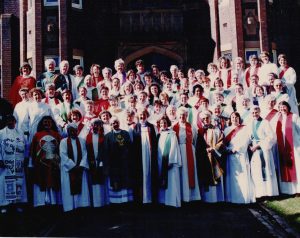
I want to change direction for a few minutes, and pose two questions that I hope will be fruitful at this MOWatch conference which is looking at the present and future as well as the past. While I was writing the chapter on MOW for Preachers Prophets & Heretics, two questions kept niggling away, namely
- What made MOW strong and in the words of The Australian ‘one of Australia’s most forceful reform movements’? and
- What sapped MOW’s energy (apart from the overwhelming sexism of the Church of course!)? What were the arguments or issues that were distracting or enervating?
Sources of strength and sustenance
Five factors stand out for me as sources of strength and sustenance for MOW during the debate. They are in no particular order but they are inter-connected.
- The ecumenical dimension was immensely important, stimulating and challenging. Patricia Brennan in particular inspired links between Catholic feminists, the WomenChurch collective and MOW that flourished in the decade from the mid 1980s to the mid 1990s. These were the heydays of Christian feminism, expressed in cross-membership of the various groups, in the conferences in Collaroy, Strathfield, Melbourne and Canberra and given voice in the journal WomenChurch.
- Connections with and inspiration from like-minded individuals and groups in the wider Anglican communion were vital from the beginning. They were another aspect of Patricia Brennan’s charism. MOW brought to Australia a procession of women who were priests and radical feminist theologians – for spiritual and intellectual nourishment, to prove they existed, and to provoke a reaction from the institutional church. Intrepid members attended and reported on Barbara Harris’s consecration in Boston and Penny Jamieson’s in Dunedin. The magazine and newsletters, and Ebb & Flow especially, brought news of overseas developments, not least the appointments of women clergy in elsewhere in the Anglican communion. General Synod debated the issue as if it had never ever been debated before – but we knew differently because we had seen the future.
- The magazines and newsletters played a huge role in sustaining MOW members individually and collectively. A formidable number appeared, nationally and locally. When the gap between issues struck some members as unacceptable, they filled it as MOW Sydney did with ‘Balaam’s Ass’, for example. They provided information, but most importantly they were an outlet for members’ reflections and reports, for theologizing and commentary. Much of the content was original and forward-looking – in contrast to the publications of the opponents, which were often articles reprinted from overseas. In the days before the internet and email (remember them?), the magazines and newsletters were life-sustaining.
- MOW developed a confidence over the years. It was confident with the media (and buoyed by all those sympathetic journalists), increasingly confident to speak write and sing theologically. Members published books, hymns and prayers that were well-received. MOW built up a reputation for incisive comment (due particularly to Patricia Brennan’s penetrating one liners) as well as for up to date, accurate information, particularly as the debate reached a climax in 1992. It was the reliable, authoritative voice on the number and appointments of women clergy, for example, to which both the official church and the media turned.
- Finally, the fact that the issue resonated with the public and attracted widespread support in the Australian community was immensely sustaining. Articles and arguments about the role of women in society abounded in the media in the 1980s and early 1990s. This was something that really only struck me as I combed newspapers from the period to identify the photos for Preachers Prophets & Heretics. There was a public fascination with the trail blazers and pioneers in male-dominated fields: airline pilots, lawyers, cabinet ministers and premiers – and women clergy.
Energy sapping issues
The second question I want to pose is: What sapped MOW’s energy, during the debate itself and immediately after 1992?
Three factors that stand out for me are these:
- There were many vigorous arguments in MOW over the best ways of achieving the goal of women’s ordination. Some in MOW were well-established in and ultimately committed to church structures and processes, others sat more lightly to them, still others despaired of them. How ‘polite’ should MOW be? How grateful, how critical, how cynical, how angry? Should MOW avoid offending any supporters of women’s ordination, or should it spell out in no uncertain terms the offense created by the church’s exclusion of women from ordination and leadership? Should it educate gently or challenge provocatively? What was the best strategy: focusing on synods or bishops or winning public support? The suffrage movement in England split into the suffragists (the polite educators) and the suffragettes (the radical demonstrators and arsonists), but MOW somehow accommodated a range of strategies and viewpoints and the issue largely evaporated, at least for MOW in dioceses where women were ordained priest.
- There were very different views and expectations within MOW about the extent of reform needed. Again, tensions around this were both overt and covert. Some people joined MOW because they wanted to see women ordained – in particular the woman deacon in their parish and others like her – no more, no less than that. Others, especially the core members and leaders, campaigned for a wholesale transformation of the church, its language and liturgy, its decision-making processes, the theology it taught, everything. Certainly, the constitution made it clear that that MOW was committed to a reformation of the church – women’s ordination as deacons, priests and bishops was a necessary step but by no means sufficient.
- One of the most unexpected and complex of the energy-sapping distractions ironically came about after women were ordained in 1986. The tensions between lay and ordained women caught both by surprise I suspect. Some of this dis-ease related to differences over the extent of reform and how best to achieve it, but it was more than that. Some lay women were affronted by seeing women in clerical garb, some lay ministers were hurt when displaced by women deacons; some women deacons felt diminished by MOW’s excitement over women priests from overseas. The tension and awkwardness festered below the surface in MOW Melbourne and in the national network – but despite the brave attempts of several women deacons to air it, the discomfort remained largely unspoken and unresolved in 1992 and I think beyond that.
‘A pretty sizeable reformation’
Five sources of strength and three energy sappers is quite enough so I will leave it there. I will finish as I began with a quotation from Patricia Brennan, the one that concludes Elaine Lindsay’s fine introduction to Preachers Prophets & Heretics
That’s a pretty sizeable reformation to bring about: if you could think priest, think male and female; think God, think male and female.
That’s it: A pretty sizeable reformation.
[1] Australian, 30 September 1992.
[2] Sydney Morning Herald, 25 August 1981.
[3] MOW National Magazine, April 1994, Ebb & Flow insert, pp. 1-2.

